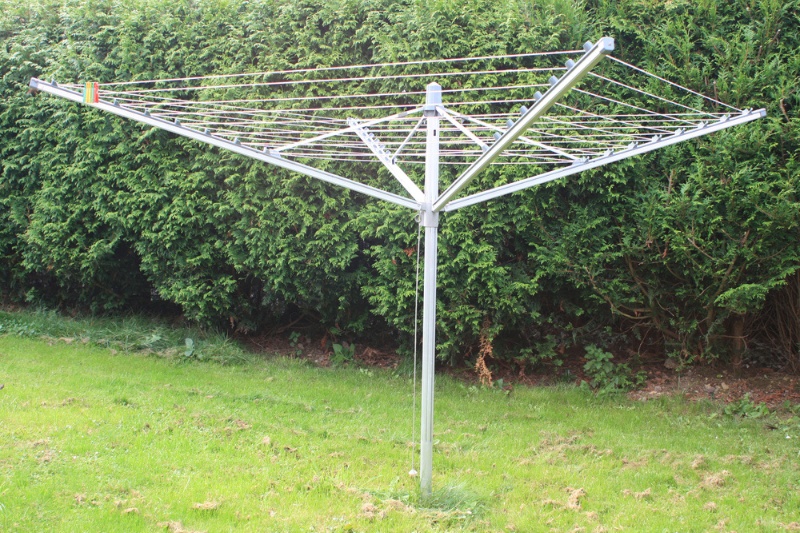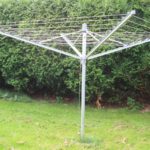How wonderful it is to get your clothes dry outside in the fresh air!
Out in the cool clean atmosphere, where they can dance and bob about in those energetic eddies, becoming suffused with nature’s wondrous scent, all the while treating the planet with respect and not dumping more greenhouse gases its way.
More to the point, how incredibly cheap!
Installing a Ground Spike for a Rotary Dryer Without Concrete
There are two methods you can use to install a ground spike for a rotary dryer without using concrete.
One of them is quick but likely to lead to some serious leaning in relatively short order, especially where soil isn’t very firm or there are high levels of rainfall.
The other method takes a bit longer and will result in a far more secure station for your rotary dryer.
Before you start, make sure that there isn’t anything to stop you putting in a rotary dryer. If your garden is communal, for instance, you may need to check with everyone else with access.
Of course, you should check with your landlord that, should concrete be a no-no, a dryer itself doesn’t present a difficulty.
Also, be sure you’ve got a good idea of how big a rotary washing line you need before you go and purchase one.
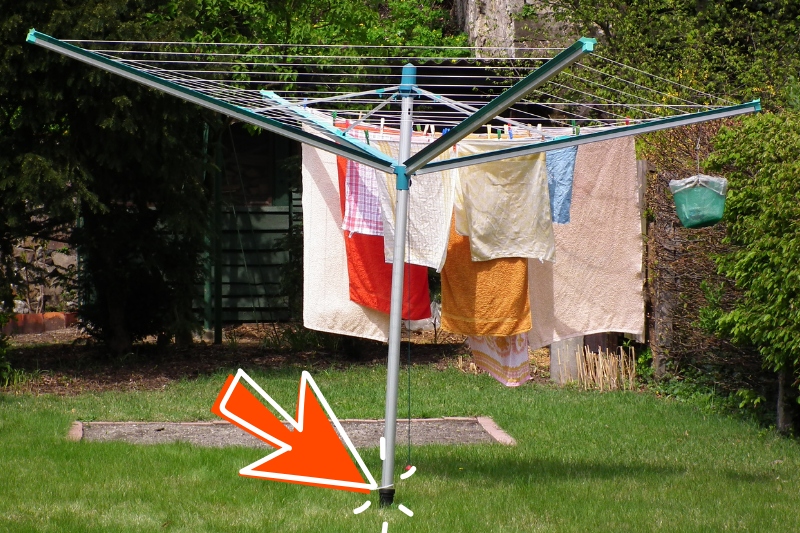
Method 1 – Whack it in (less secure)
- Get a hollow ground spike and a hammer.
- Decide where you want the dryer (bear in mind clearance – sheds, shrubs, fences etc.)
- Hammer the spike into the ground at that point. Insert the dryer pole into the spike. Done.
Method 2 – Use gravel (more secure)
- Get some gravel, a spade, and a tarpaulin.
- Again, decide where the rotary line’s going to go.
- Use the spade to dig out a hole about 20 inches deep and about 10 inches square. Put the dug-out dirt on the tarp.
- Fill the bottom 10 inches with gravel. Then place the ground spike end in the gravel. Get someone to hold it upright. The idea is to have the spike top flush with the level of the lawn, so it may need to be deeper or shallower depending on the length of the spike.
- Fill in around the spike with 4 inches more gravel.
- Then fill in with the dug-out soil, compacting as you go.
- You can then lay turf on top or plant grass seed, so you’ll eventually have a nice neat result.
Other Methods
There are ground spikes you can get with screw action, so you can screw straight into the soil. Again, the stability will be compromised if you have loose soil or hefty doses of rain round your way.
One other thought—if you have trees or other fastening points in your garden, you can always just stretch a line between them. The only drawback to this is the fact that you’re stuck with a permaline, often at the perfect height for a good garrotting.
That, or you have to undo the line and tie it back up again every time you want to use it. You’re beginning to see just how revolutionary (ho ho!) the rotary dryer really is, now, aren’t you?
Tumbling vs. Outdoors
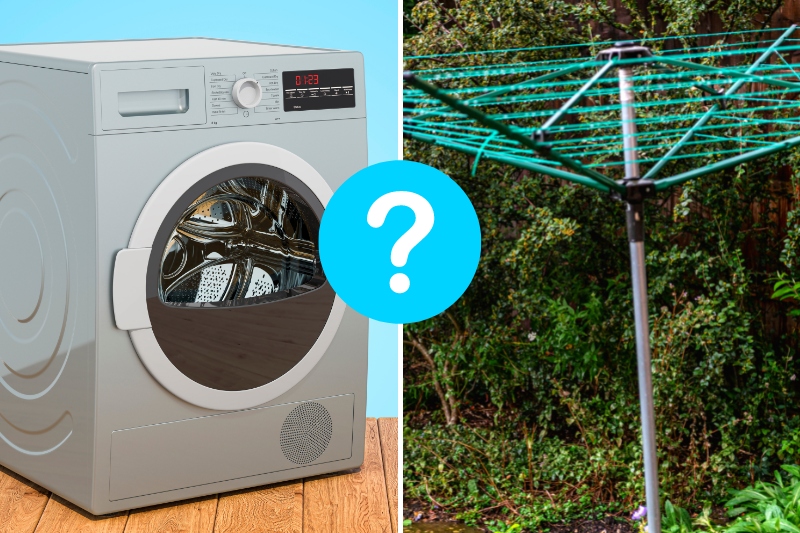
Tumblers are for bumblers, my friends. The future is out there.
Ok, a tumble dryer might be handy when you’re in a crisis. But, in general, why on earth would you want to stuff your long-suffering garments in an expensive and sometimes malfunctioning dryer when you can get it all done for nothing? Go on, give those garden gusty glories a go.
But what if you’ve decided that you want to dry outdoors rather than tumble, and your garden’s of the bijou variety? Give a rotary dryer a spin, that’s what.
They can be installed in a jiffy, whereupon your garden is transformed into a deluxe drying domain. And when you want your garden back again you can fold it up and stick it in the shed. Marvellous.
What’s that? You can’t have one because your landlord doesn’t want you to use concrete around the property? No problem. Read on.
Joining the Rotary Club
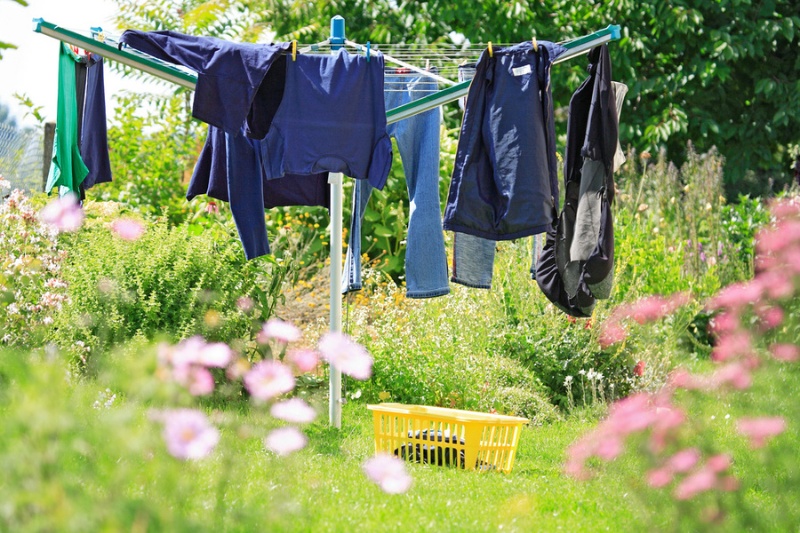
Once you get the dryer in and you start drying outdoors, your laundry life will be transformed. You’ll wonder how you ever coped without one.
What’s more, once your landlord sees it in action and how little visible lawn disruption results, they may be more amenable to a touch of concrete. If they make this breakthrough, then you can dig up your spike and set it for life.
But if they stay resolutely anti-concrete, this is no problem, providing you’ve taken a little time over your installation. Then, your gravel will not unravel and your post will stay proud.
Happy drying.

Martin’s life revolves around films, dogs and food, but rarely all at the same time. At least two out of these three like to give clothes and furniture a hard time, and Martin enjoys discovering and writing about new ways to stop them doing their worst.
